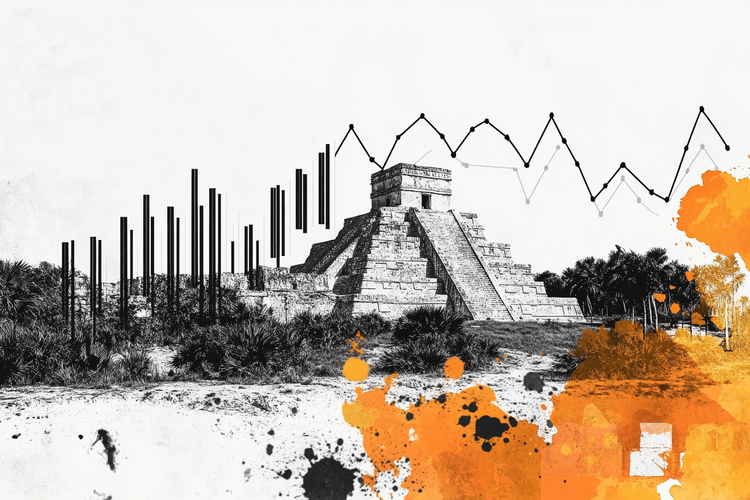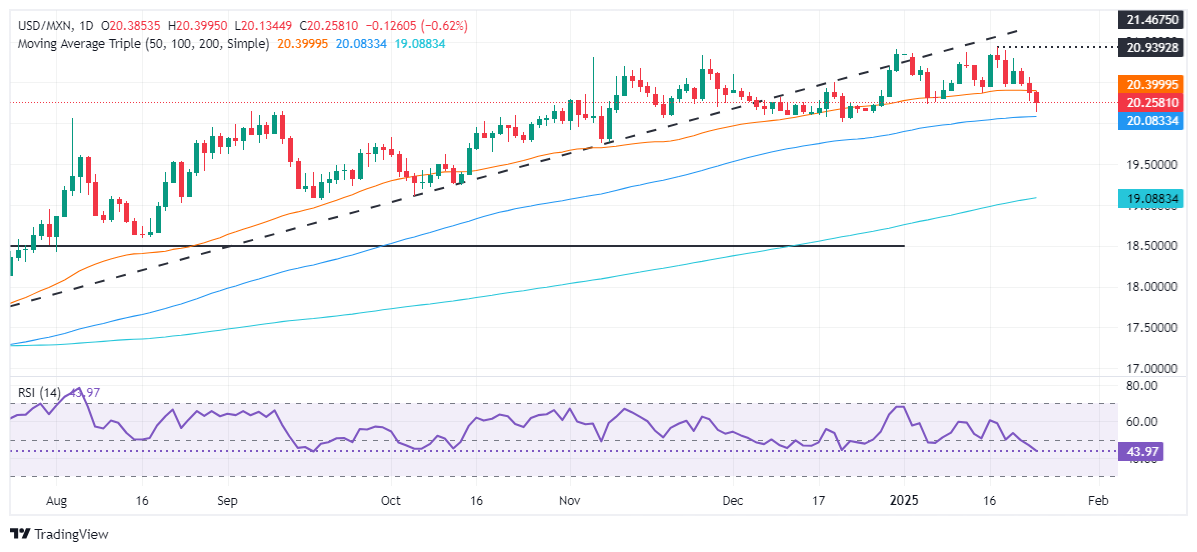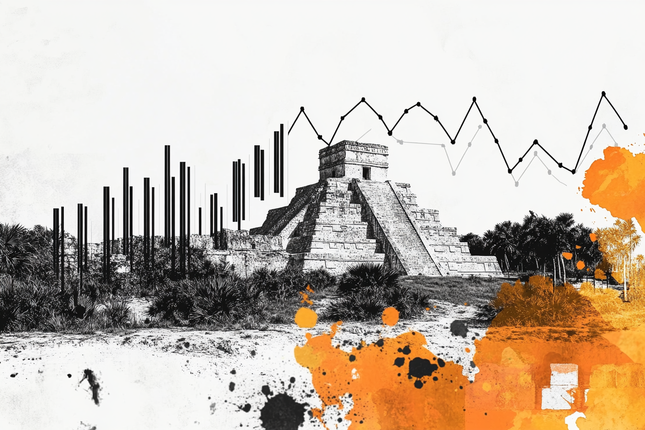Mexican Peso rallies strongly, poised for positive week close
- Mexican Peso gains amid US Dollar weakness and reduced trade fears, ignore mixed Mexican economic activity data.
- Mid-month inflation falls to 3.69% YoY, nearing Banxico's 3% target, backing dovish policy.
- Trump's moderate comments on Mexico at WEF reduce trade worries; key GDP and trade data anticipated.
The Mexican Peso (MXN) surged in early trading during the North American session as mixed economic growth figures emerged in Mexico, though broad US Dollar (USD) weakness kept the Peso bid. At the time of writing, the USD/MXN trades at 20.16, down 1%.
The Instituto Nacional de Estadistica Geografia e Informatica (INEGI) revealed that November’s Economic Activity improved monthly but not yearly. With more than 2.70% gains, the Mexican currency is set to post its best weekly performance since September 2024.
United States (US) President Donald Trump tempered his comments about Mexico and delivered upbeat remarks about the country at the World Economic Forum (WEF), which eased trade policy fears and sponsored a leg-down on USD/MXN.
Meanwhile, mid-month inflation for January dipped towards the Banco de Mexico (Banxico) 3% goal. The Consumer Price Index (CPI) rose by 3.69% YoY, from 4.44% reported in December, while the core CPI rose moderately from 3.62% to 3.72% YoY.
In the US, S&P Global revealed that manufacturing activity exited contractionary territory but failed to bolster the Greenback. Meanwhile, Consumer Sentiment revealed by the University of Michigan (UoM) deteriorated compared to preliminary ratings, while housing data improved via Existing Home Sales.
Mexico’s economy has continued to cool down and is expected to grow by just 1% in 2025. The slowdown benefited the disinflation process and supports Banxico’s dovish stance.
The Federal Reserve (Fed) is expected to keep rates unchanged. The board's main reasons for that decision are the robustness of the US economy, as portrayed by healthy economic growth, a strong labor market and stickier inflation numbers.
Next week, Mexico’s economic docket will feature the Balance of Trade, jobs data and the preliminary reading of the Gross Domestic Product (GDP) for the last quarter of 2024.
Daily digest market movers: Mexican Peso climbs amid mixed economic activity figures
- The Mexican Peso advances versus the US Dollar even though the lowest inflation figures suggest that Banxico will cut rates. Contrarily, the Fed is expected to keep monetary policy unchanged and wait for the March meeting.
- INEGI revealed that Economic Activity for November improved from -0.7% to 0.4% MoM. In the twelve-month period, the figures dipped from 0.8% to 0.5%, missing the 0.6% projected.
- Citi revealed its Expectations Survey, in which Mexican private economists revised Gross Domestic Product (GDP) figures for 2025 downward to 1%.
- Regarding inflation expectations, analysts estimate headline and core to inflation to dip below 4%, each at 3.91% and 3.68%, while the exchange rate would likely end near 20.95.
- Economists estimate that Banco de Mexico (Banxico) will lower rates by 25 basis points (bps) from 10.00% to 9.75%, though some analysts expect a 50-bps cut at the February 6 meeting.
- US S&P Global Manufacturing PMI for December increased by 50.1 from 49.4, exceeding the forecast. Meanwhile, the Services PMI deteriorated from 56.8 to 52.8.
- Money market futures have priced in 45 bps of Fed rate cuts in 2025, according to CME FedWatch Tool data.
USD/MXN technical outlook: Mexican Peso rallies as USD/MXN tumbles below 20.30
The USD/MXN falls below the 50-day Simple Moving Average (SMA) of 20.37 and extended its losses toward the 100-day SMA at 20.22, but bears failed to push prices below the latter, as it consolidates near the mid-point of the 20.20 – 20,30 range.
Momentum turned bearish as portrayed by the Relative Strength Index (RSI). Therefore if USD/MXN tumbles beneath 20.20, the next support would be the 20.00 figure. On further weakness, the next support would be November 7 swing low of 19.75, ahead of the October 18 low of 19.64.
Conversely, for a bullish resumption, the USD/MXN must climb above 20.55 so buyers have a clear path to challenge the year-to-date (YTD) high at 20.90. Once surpassed, the next stop would be 21.00, followed by March 8, 2022, peaking at 21.46 ahead of the 22.00 figure.
Banxico FAQs
The Bank of Mexico, also known as Banxico, is the country’s central bank. Its mission is to preserve the value of Mexico’s currency, the Mexican Peso (MXN), and to set the monetary policy. To this end, its main objective is to maintain low and stable inflation within target levels – at or close to its target of 3%, the midpoint in a tolerance band of between 2% and 4%.
The main tool of the Banxico to guide monetary policy is by setting interest rates. When inflation is above target, the bank will attempt to tame it by raising rates, making it more expensive for households and businesses to borrow money and thus cooling the economy. Higher interest rates are generally positive for the Mexican Peso (MXN) as they lead to higher yields, making the country a more attractive place for investors. On the contrary, lower interest rates tend to weaken MXN. The rate differential with the USD, or how the Banxico is expected to set interest rates compared with the US Federal Reserve (Fed), is a key factor.
Banxico meets eight times a year, and its monetary policy is greatly influenced by decisions of the US Federal Reserve (Fed). Therefore, the central bank’s decision-making committee usually gathers a week after the Fed. In doing so, Banxico reacts and sometimes anticipates monetary policy measures set by the Federal Reserve. For example, after the Covid-19 pandemic, before the Fed raised rates, Banxico did it first in an attempt to diminish the chances of a substantial depreciation of the Mexican Peso (MXN) and to prevent capital outflows that could destabilize the country.
Forex News
Keep up with the financial markets, know what's happening and what is affecting the markets with our latest market updates. Analyze market movers, trends and build your trading strategies accordingly.
















